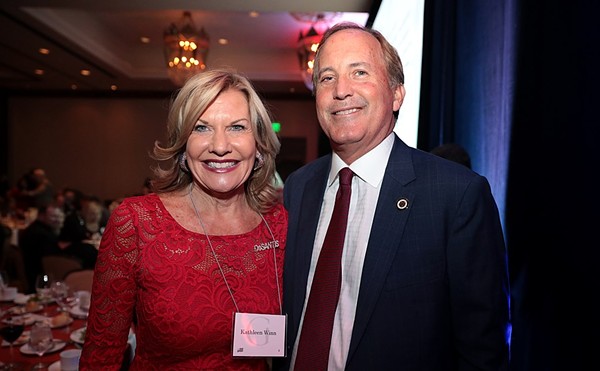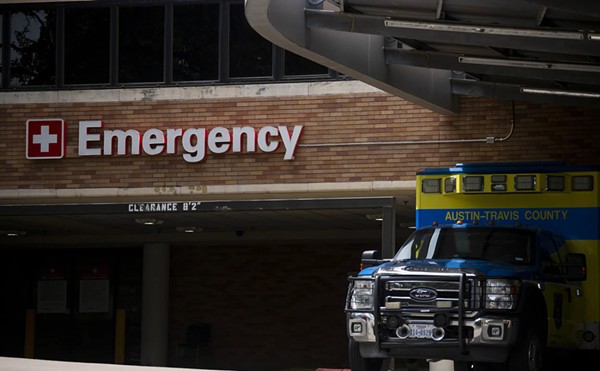It’s an oversight writ large in his thoughts after a white truck exited a Jack in the Box on April 15 as he rode his bike home. The truck hit the side of Evans’s bike and he hit the asphalt chin first. As a white blur zoomed away, Evans said he peeled his head up from the road and his chin began “raining big, huge, bloody drops and clots” of blood.
At that moment, Evans had to make a decision: Should he go to the emergency room and face a large medical bill he might not be able to pay, or try to take care of it himself and risk scarring and infection?
It’s a choice America’s 47 million uninsured run the risk of facing every day. And as health costs and the price of medical insurance rise, the nation’s vulnerable keep pace: the number of uninsured Americans has risen by 7 million people since 2000.
The National Federation of Independent Business, the nation’s leading small-business advocacy association, notes on its website that the number of uninsured Americans “hits especially close to home for small businesses, since approximately 27 million of those uninsured are the self-employed and small-business owners, their employees and their families.”
Evans was reluctant to go to the emergency room. As an uninsured small-business owner (and his only employee), he was afraid to face a hospital bill that might send his business and personal life into a tail spin; his girlfriend dragged him to the Northeast Baptist Hospital ER.
Upon arrival, he explained his insurance situation to the woman at the front desk, who replied with a calming, “Don’t worry, honey.”
After two-and-a-half hours of waiting and 10 minutes of stitching, Evans left with three threaded loops in his chin and went home to await what he thought would be a $300 hospital bill. “That’s $100 a stitch,” he reasoned.
The hospital bill was $1,024.75. Then he received a separate bill from the doctor for $423.
“It would be really nice if when you walked into the emergency room they had a huge sign that said ‘$1,500 for three stitches,’” says Evans. “Then I could have turned right around and gone home.”
You might be wondering how three stitches cost $1,447.75. As counterintuitive as it may seem, the uninsured are charged on average two-and-a-half times more for the same procedure than those that have insurance, according to a Harvard study published by the journal Health Affairs. This seems all the more ironic, as Evans says, because “If I had an extra $1,500 hanging around, I would have insurance.”
Nora Johnson of Medical Billing Advocates of America, a nonprofit that analyzes medical bills and reports on escalating healthcare costs, said, “The $1,500 is an arbitrary number. It doesn’t mean that is the amount they try to get out of every patient. The only people who are actually expected to pay that are the 3 percent of the patient population which I call the working poor; people who don’t have insurance but have attachable assets.”
The American Hospital Association says that “everyone is charged the same amount.” This is technically true; the hospital does give insurance companies the same initial bill that they give the uninsured. The difference in costs comes in the enormous negotiated discounts insurance companies receive.
Ron Carson, a professor at the Institute for Medical Humanities at the University of Texas Medical Branch, has his own theories about inflated costs. He writes via email: “Hospitals inflate their fees for a number of reasons (e.g. cost-shifting, or as a benchmark for negotiating discounts.)”
Johnson puts it more bluntly. “Before you blame high costs on things such as indigent care, start looking at the salaries of staff and CEOs, and construction costs,” she said. “What most people don’t realize is that the government reimburses the hospitals for almost all indigent emergency medical costs.” In other words, uninsured taxpayers are paying for charity care and paying $1,500 for their own three stitches.
After receiving the bill and taking a bit of time to pick his jaw up off the ground (figuratively this time), Evans called the hospital and requested an itemized bill. The ER tab listed a lidocaine injection, a hydrocodone tablet, an ER surgical procedure, and an emergency-room charge. The separate doctor’s bill listed a charge for the “Emergency Dept Visit” and wound repair. During an interview at Music Town, Evans points out two separate charges, one on each bill. The hospital bill listed $448 for “ER Surgical procedure simple” and another from the doctor listed $270 for “Repair superficial wound.” Amidst the soft jazz playing in the background at his store, he mumbles “This is such bullshit” and asks if the two do not sound like the same charge.
The billing-advocacy group alleges that medical bills are rife with errors such as double charges and miscounts. Some costs on Evans’s bill are what Johnson refers to as “blanket costs,” bundled charges that really cannot be interpreted, such as the $563 for “Emergency room level III.” Johnson said that there’s a good chance that any medical bill she analyzes will have some type of error. The most common include charging for routine items like surgical gloves, hospital gowns, or IV tubes. Johnson’s favorite medical over-billing anecdote is about a former client who was charged $53 multiple times for latex gloves. She’s also seen a bill where the patient was charged for three surgeries (and only had one) and another where the client was charged $1,004.50 for a toothbrush.
Although the American Hospital Association does not admit to inequalities in billing, spokesperson Elizabeth Lietz said, “The AHA has been working on pricing and making sure that our patients know that there are billing procedures that are more patient-focused.” They are providing “The Patient Friendly Billing Project” and a website to help patients understand their bills better and “simplify their process.”
The direct result of inflated and error-filled hospital bills is the patient’s inability to pay. While Evans may eventually be able to settle his $1,500 bill for three stitches, what about the accident victim who winds up in intensive care for a week, or a month? Predictably these costs lead to credit issues and debt. According to a study published in Health Affairs, almost 50 percent of bankruptcy cases are related to medical debt. And even if you have insurance, you are not in the clear. The same Harvard study found that three-quarters of those who filed for bankruptcy as a result of medical debt actually had medical insurance at the onset of their illness or injury.
“It’s a consequence of our not having a universal system of health-care delivery in which everyone is entitled to at least a decent minimum of basic health services,” says UTMB professor Carson.
Although for now Evans will not have to dip into his store funds to pay off his bill, he only has enough saved cash to pay his apartment rent for three months without making a profit at Music Town. And with no employees, long hours, and no overtime pay, there’s not much else he can do for cash (he did mention the imminent probability of weekly plasma donations). He’s not alone on that end, either. According to the National Coalition on Health Care, early one-quarter of the uninsured reported changing their way of life significantly in order to pay medical bills.
As Evans lay on the road on that humid April night, his first thoughts were about the condition of his bicycle. He had no way of knowing that one month later he would have far more crucial worries. After all, he only needed three little stitches.
| 4 Phrases – On Medical Debt |
Know how you can be on anti-malarial drugs in a foreign country and wig out on your traveling companions who ditch you by the Tambopata riverside, leaving you to win over new friends in the Amazon basin, in the village of San Antonio, and all you need are a few useful phrases (like “I am going to tell you the story of the man who they say ate other human beings like himself”; in Iquito, “quiiquiaaja saquiini nuuquiica saquiini inna caaya asariquina huarita caaya.”)? Well here are some bite-size phrases you can use domestically. It’s “4 Phrases On: Medical Debt.”
1. We’ve seen enough medical-surgeries-gone-bad footage to know that doctors make mistakes — assuming your medical charges correspond to the services rendered makes an ass out of you alone: ask for an itemized bill and calculate the costs yourself.
2. Scoping out places with free or low-cost healthcare services is as easy as a click or a call: Ask.hrsa.gov/pc or 1-888-275-4772. If you’ve already had your high-priced colonoscopy (or stitches) consider reaching out to Patientadvocate.org, a group that suggests fundraising events to offset medical debt.
3. Don’t charge it! Paying medical bills with a credit card could affect your Medicaid eligibility, and only a jacksauce would subject themselves to those interest rates: ask the hospital to set up a payment plan and get it in writing.
4. There’s no debtors’ prison, but you may have to go to court for not paying medical bills (you could go to jail for not appearing): your best options include filing for Chapter 7 or 13, leaning on friends and well-wishers (see number 2), or staying healthy and accident-free. — Keli Dailey *Source, National Endowment for Financial Education |

















